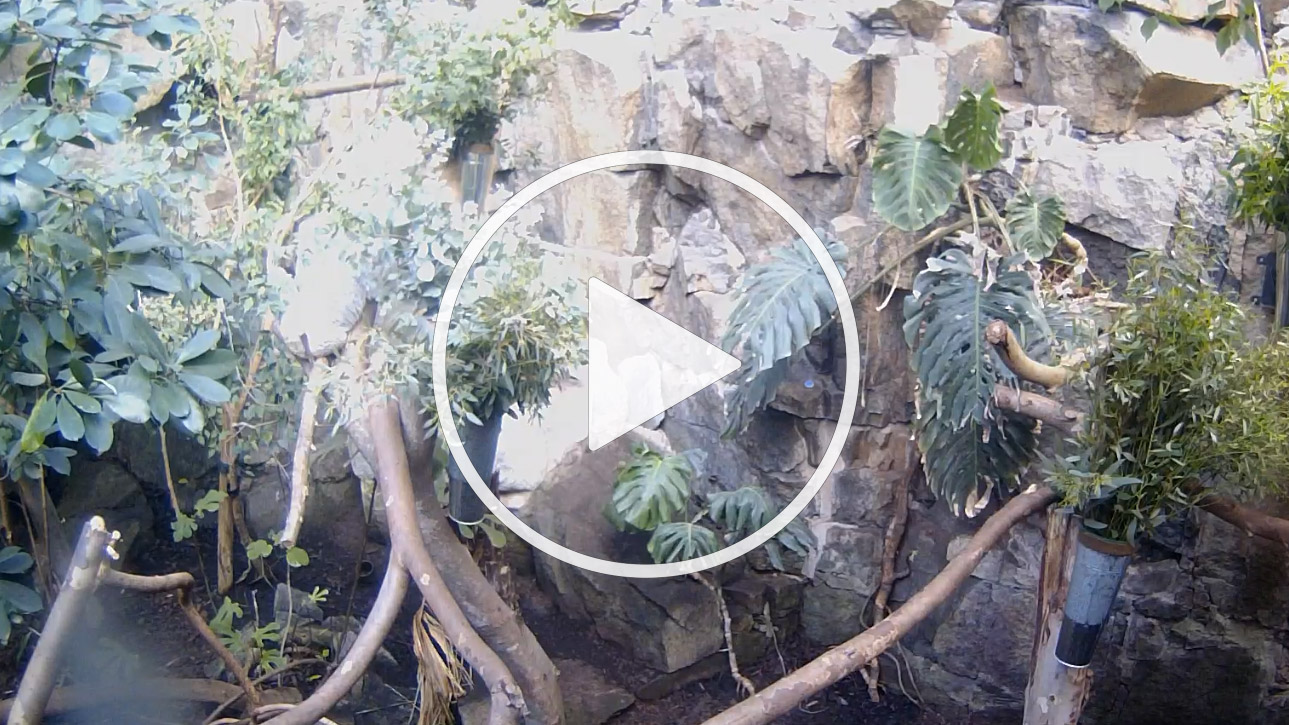Edinburgh Zoo Live Cam
Possibly the laziest animals in the Zoo as they sleep for around 19 hours every day

Edinburgh Zoo is home to the largest outdoor penguin pool in Europe
Following the successful and hugely popular Phase I of the Darwin Centre, featuring the Darwin maze and picnic shelter, we now look forward to - yes, you’ve guessed it! - Phase II. This LEEL funded project will include new homes for marmosets and tamarins, and innovative state-of-the-art interpretation on biodiversity. There will also be a physic garden - that is a veterinary physic garden which will tell you all about the use of plants in veterinary medicine - many exciting mysteries of this topic will be revealed. We are very excited to announce plans for building completely new enclosures for our lions and tigers. They will be on the hilltop, in wooded slopes, with lots of space for these marvellous big cats to roam. The lion enclosure - which will be home to rare Asiatic lions - will be opening in 1999, and the tiger enclosure for our Siberians will open in celebration of the new millennium.
That’s the name of this year’s campaign by the Federation of Zoos, aiming to raise awareness of the plight of native wildlife in this country, and to raise funds for field projects to help conserve some of our more threatened species. Wildlife in Britain is threatened by just the same problems as their more exotic fellows around the world - including habitat destruction, environmental pollution, human encroachment and changes in farming practices. The ‘It’s Your Wildlife - Save It!’ campaign was launched in July, and will run until the end of next year, supported by an exciting programme of events and fundraising activities in 55 zoos and wildlife parks around the country.
The Highland Wildlife Park is a unique attraction only ten minutes from Aviemore. Here, you can discover Scotland's wildlife past and present. There's lots going on at the Park over the next few months. Catch the "Drive in Breakfast" from A 0 am as the warden feeds the many animals in the main reserve. See bison, red deer, highland cattle, Pzrewalski's horses and ancient breeds of sheep! Every day from 3pm onwards (except Saturday) you can join the wardens as they feed the Park's carnivores: wolves, lynx, arctic fox, otters and bear. Every weekend and on Holiday Mondays you can join in the fun at our themed event days. Learn all about the Park's fascinating inhabitants during talks by the wardens and take part in trails, free face-painting and much more.
Two places is the title of an extraordinary exhibition of paintings by Diane Melville, a learning disabled adult who has been visiting the Zoo for the past few months as part of an Art of Change project run by Artlink. The pictures – six acrylic paintings, three watercolours and one pastel sketch – are very vibrant and reflective of Diane’s enthusiastic interest in the animals.
The Art of Change - The programme began in October 1995, offering visual and performing arts activities to people resident at Gogarburn Hospital in Edinburgh, and it has been very active in supporting people during the closure of the Hospital and the transfer of the residents into the community.
Edinburgh Zoo placement - Diane’s placement at the Zoo is one of six which have taken place throughout the city. It began at the end of September 2000, and lasted four months. Diane visited the Zoo every Friday for around five hours, with one to one support from Catherine Mills, a trained artist with the Art of Change project. Diane made sketches and took photographs, then worked on the paintings in the Art of Change studio at Craigmillar. Hence the title ‘Two Places’ which Diane gave to her exhibition.
Diane Melville - Diane has been developing her artistic skills for the past four years, and has always had a keen interest in animals, so a placement at the Zoo was an ideal opportunity for her to further develop her skills while following her love of animals. She was encouraged to decide which animals she would paint, and her confidence grew as the placement continued. She became very decisive about subject matter, use of materials, and even the shades of the colours.